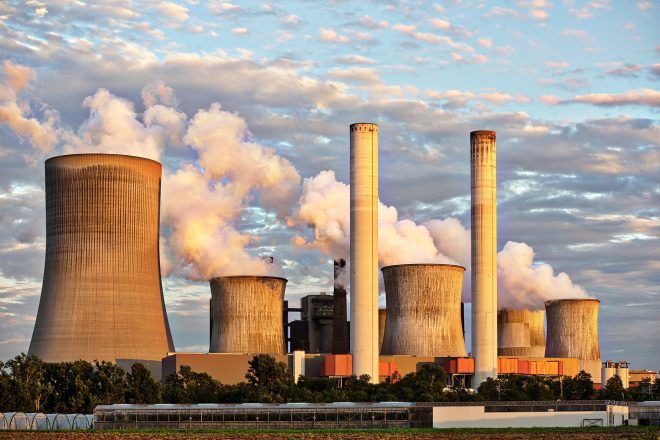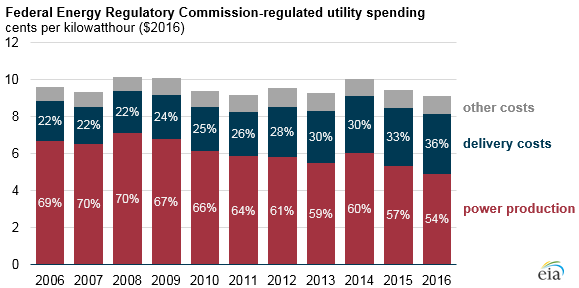The browser you are using is not supported. Please consider using a modern browser.

Raising Electricity Delivery Costs are Offsetting Decreasing Production Costs

You may have noticed over the past decade that fuel costs for sources used to generate electricity, like coal and natural gas, have decreased. However, the price you are paying for electricity has most likely gone up in that same time frame. So, what gives? We will take a look into why your electricity bill is continuing to grow and what you are actually paying for.
Electricity Delivery Costs
The average electricity price for residents and businesses have grown 1.5% every year since 2006 like clockwork. However, the cost of power production has dropped 15% on average since 2006. These costs include everything from the transmission, generation, and distribution used to produce the electricity our country uses. As technology and power plants get more efficient, the cost to produce electricity drops. The price for the main sources to create electricity have dropped as well.
So, why are you paying more for electricity? Delivery costs. Delivery and other costs have grown at the same rate production costs have decreased since 2006. Coincidentally, they have also grown at the same rate as inflation over that same time period. You can see from this graph provided by EIA.gov that delivery costs and other costs now account for nearly half your electricity bill.

Why are Electricity Delivery Costs Rising?
The electricity delivery charge is any costs associated with the delivery of electricity to your home. This includes telephone poles maintenance, power lines, meters, transformers, customer service, etc. You may be thinking “These have been around for decades so why am I paying more for them now?”. Simply put, it is because they have been around so long that we are paying more for them now. The electrical infrastructure in the United States is aging and the costs associated with maintaining and replacing outdated delivery of electricity is increasing. Similar to roads and bridges, as our electrical grid ages, there needs to be more maintenance done for safety and efficiency in order to keep electricity flowing to our homes and businesses reliably.
Also, costs for new technology and innovation have risen in recent years. New smart meters are being installed all over the country to give the consumer more data about their electricity usage. Smart meters will help utilities cut costs by allowing them to read electrical usage without having to send someone to read every meter. While these aim to cut costs considerably, in the long run, the initial investment is substantial. Also, as our country becomes more and more reliant on renewable energy, the costs to connect these new power sources to our current electrical grid is a contributing factor as well. On top of all this, administrative and customer service costs have also risen nearly 20% over the past decade.
What Can We Do?
It may be infuriating to know that while energy production costs are going down, you will continue to pay more for the delivery of electricity. However, all is not lost for those in a deregulated energy state. While the delivery charge is something that the utilities charge and is not comparable, you can shop and compare your supply rate with different providers in your area. By switching to a lower supply rate, you may be able to offset the growing delivery charges from utilities. To begin shopping supply rates, simply go to ElectricityRates.com and enter your ZIP Code to find all the available rates in your area and our top picks.